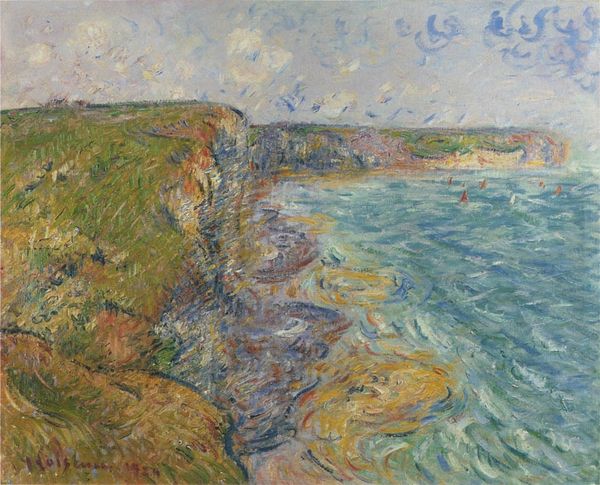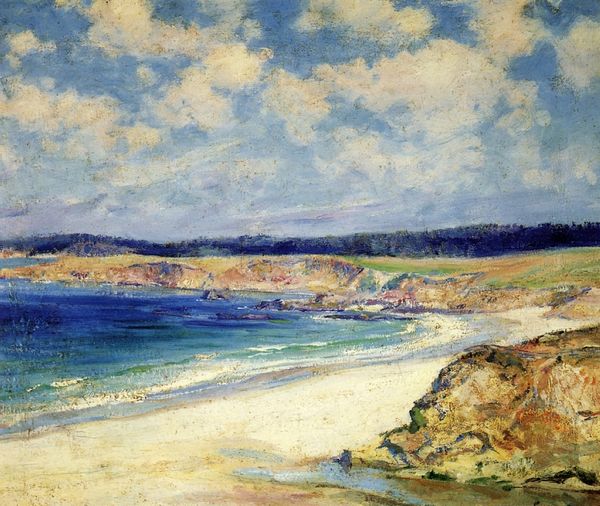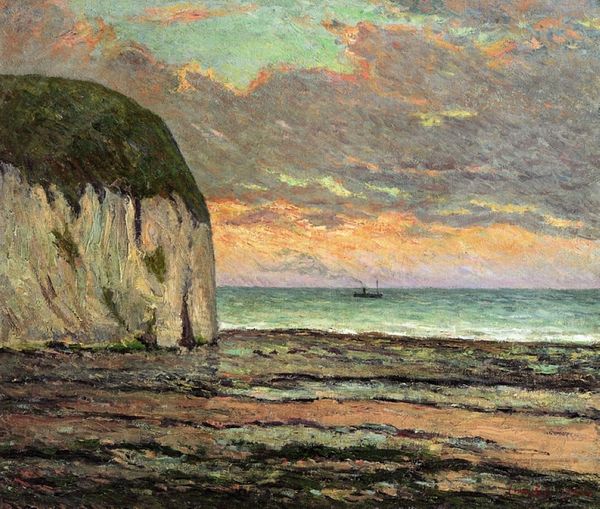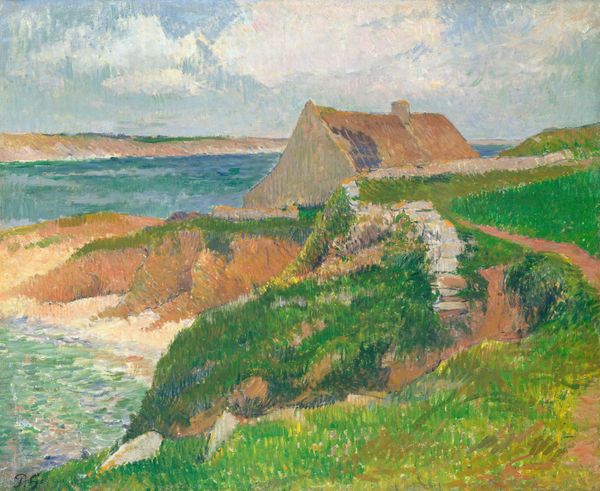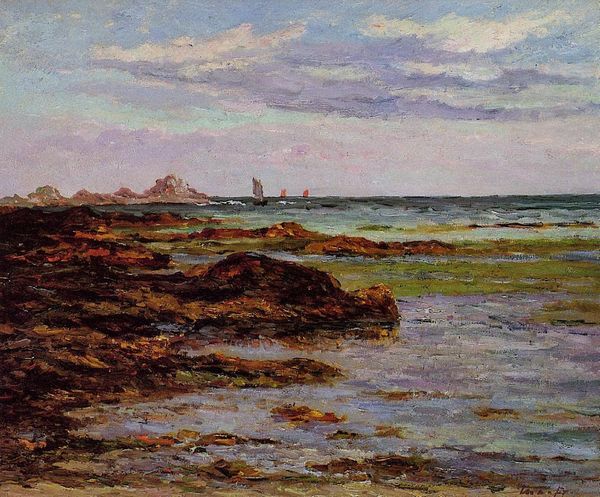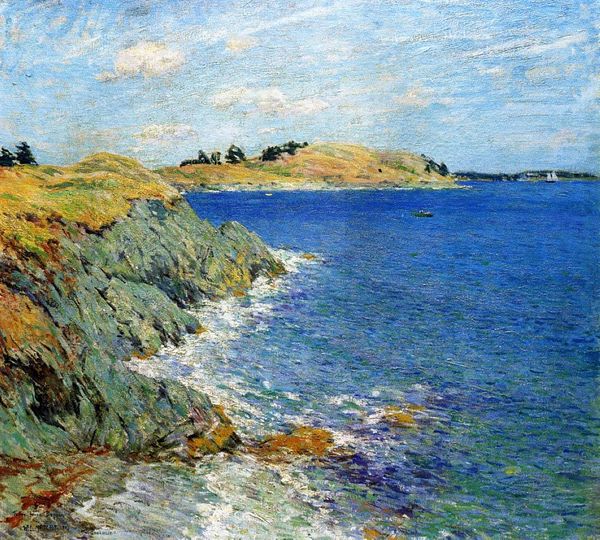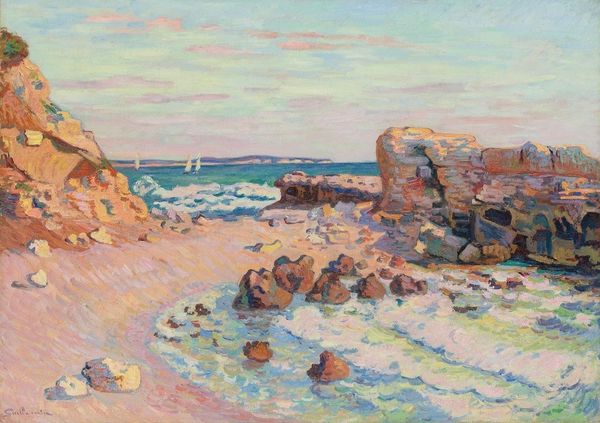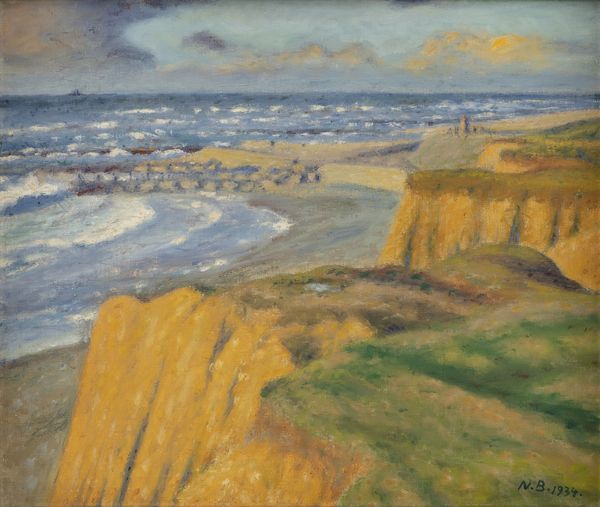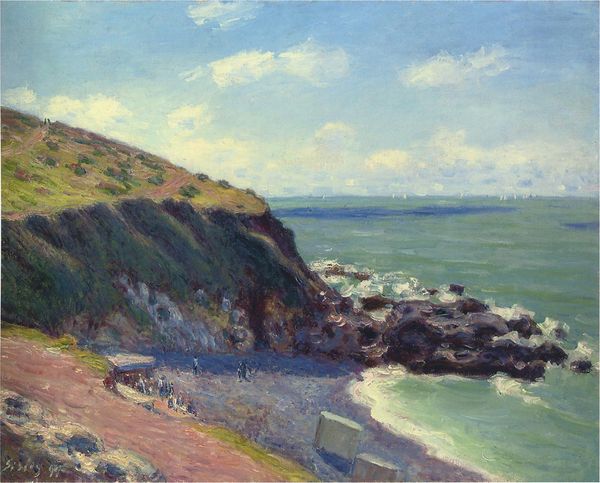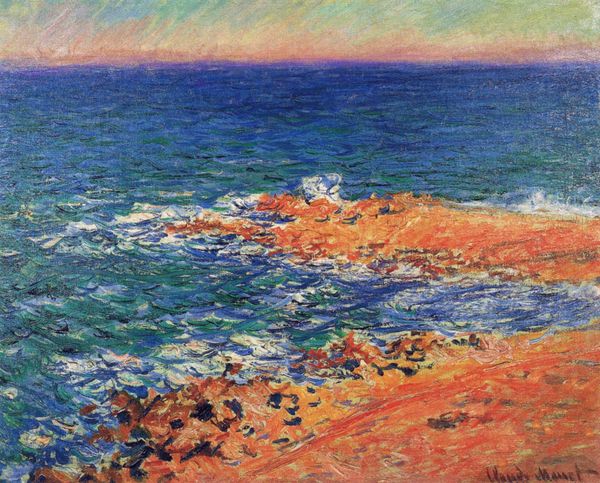
painting, plein-air, oil-paint
#
sky
#
cliff
#
painting
#
impressionism
#
plein-air
#
oil-paint
#
landscape
#
impressionist landscape
#
oil painting
#
seascape
#
sea
Dimensions: 60 x 73 cm
Copyright: Public domain
Curator: We’re looking at “By the Sea,” a landscape painting by Gustave Loiseau. Though the artwork's specific date isn't known, the artist worked primarily in the late 19th and early 20th centuries. It is done in the Impressionist style, using oil paints. Editor: It has a calming, contemplative feel to it. The colours, though vibrant, are muted, creating a sense of stillness and reflection. Curator: Loiseau, deeply embedded in the Impressionist movement, painted primarily en plein air. Consider that this artwork encapsulates the fleeting effects of light and atmosphere, cornerstones of the Impressionist aesthetic. His choices in representation of land and sky feel deliberately contemporary; it stands apart from older artistic movements’ ideas about the natural world. What social contexts can we tease out? How does a painter choose to paint land? Editor: Looking at it symbolically, the sea often represents the subconscious, the vast unknown of the human psyche. The cliffs could be interpreted as barriers, the limitations and boundaries that define our experience of the world. Curator: That reading resonates, given that landscapes of this kind often function as allegories for individual consciousness, or sometimes for colonial ambition and claiming land. Impressionism, emerging within distinct economic systems of production, and in specific cultural landscapes, provides an example of an approach that’s intrinsically modern. Loiseau actively grapples with contemporary ideas. Editor: And yet, even with the impressionistic style, certain archetypes remain legible. The clouds overhead hint at something almost divine – perhaps the infinite possibilities life holds. Curator: Absolutely. His mark-making retains associations with the sublime, but here translated for a secular, modern audience navigating a swiftly modernizing Europe. And though “divine” is one avenue, might those clouds also refer to shifts in weather and the rise of climatology as a means of measuring the planet, also influencing an epoch and culture of change? Editor: Perhaps Loiseau intended to bridge these concepts – old with new. It reminds us that our human relationship with nature is complex and that it always carries meaning. Curator: I completely agree. Thank you for sharing those thoughtful perspectives. Editor: A pleasure. This painting definitely invites us to think beyond what we see at first glance.
Comments
No comments
Be the first to comment and join the conversation on the ultimate creative platform.


